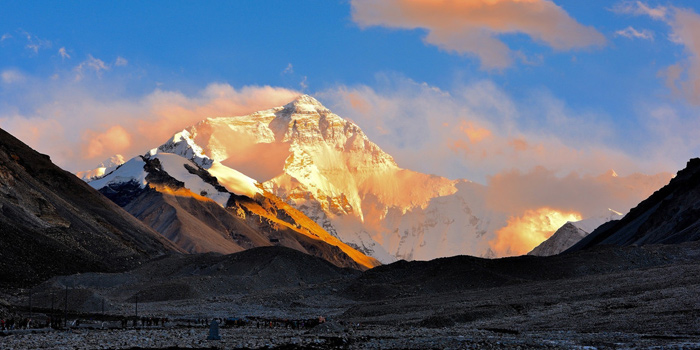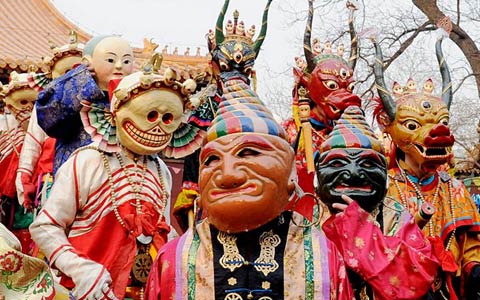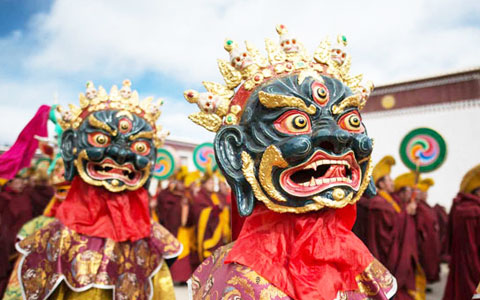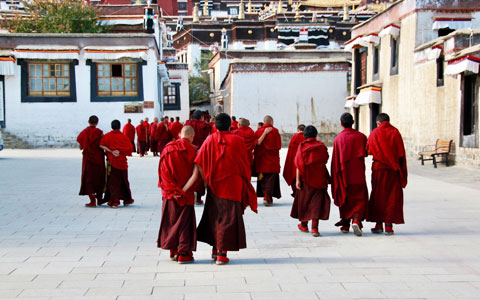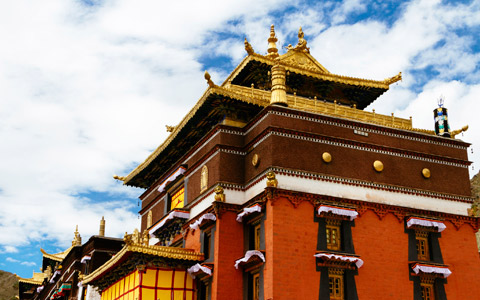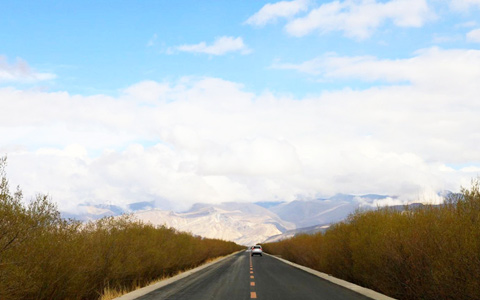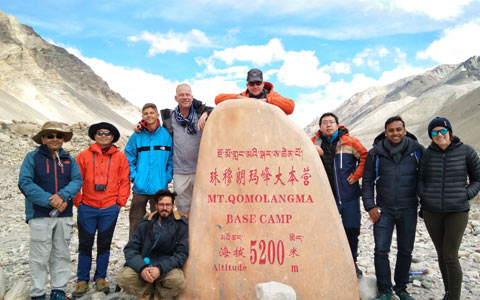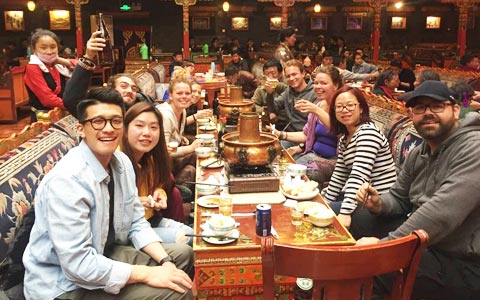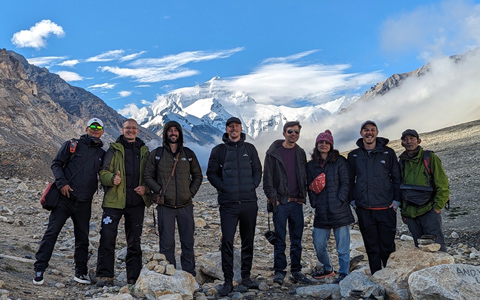Shigatse Temples: what are the must-see monasteries in Shigatse
Shigatse, the second largest city of Tibet Autonomous Region, is a significant city for Tibetan history and tourism. It is located in the alluvial plain at the confluence of the Brahmaputra and the Nianchu River. Shigatse is very rich in tourist attractions. There are some beautiful and splendid natural landscapes like Mt. Everest, Yamdrok Lake, etc. Shigatse also owns about 19 monasteries in total.
The most recommended temples in Shigatse include: the landmark of Pelkor Chode Monastery in Gyangtse County, the biggest monastery Tashilhunpo Monastery in Shigatse, the Bon religion Yungdrungling Monastery, the world's highest monastery - Rongbuk Monastery, the Jonangpa Phuntsoling Monastery, the Nepali-style Paba Monastery, and the essential Sakya Monastery of Sakya sect. If you intend to have a Shigatse tour, these monasteries can be the must-see tourist attractions.
 Pelkor Chode Monastery - Landmark of Gyangtse County
Pelkor Chode Monastery - Landmark of Gyangtse County
 Shalu Monastery to Nartang Monastery - Shortest & Most Relaxing Tibet Trek
Shalu Monastery to Nartang Monastery - Shortest & Most Relaxing Tibet Trek
 Tashilhunpo Monastery - Traditional Seat of Panchen Lama & Future Buddha & Monk Chant
Tashilhunpo Monastery - Traditional Seat of Panchen Lama & Future Buddha & Monk Chant
 Sakya Monastery - Reputed as the “Second Dunhuang”
Sakya Monastery - Reputed as the “Second Dunhuang”
 Rongbuk Monastery - the Highest Monastery in the World
Rongbuk Monastery - the Highest Monastery in the World
 Yungdrung Ling Monastery - the Second-most Influential Bon Monastic Institution in Tibet
Yungdrung Ling Monastery - the Second-most Influential Bon Monastic Institution in Tibet
 Phuntsoling Monastery - the Only One Jonangpa Monastery in Tibet
Phuntsoling Monastery - the Only One Jonangpa Monastery in Tibet
 Paba Monastery - Nepali-style Monastery Built by Songtsen Gampo for Princess Bhrikuti
Paba Monastery - Nepali-style Monastery Built by Songtsen Gampo for Princess Bhrikuti
Pelkor Chode Monastery - Landmark of Gyangtse County
Pelkor Chode Monastery means “Auspicious Wheel Joy Monastery” in the Tibetan language. It lies at the foot of the Dzong Hill to the west of Gyangtse County. Encircled by mountains on three sides, the monastery is composed of four major parts: Buddhist halls, towers, Zhacangs (the room for monks), and the surrounding wall. It is an important cultural relic protection unit on the level of the Tibet.
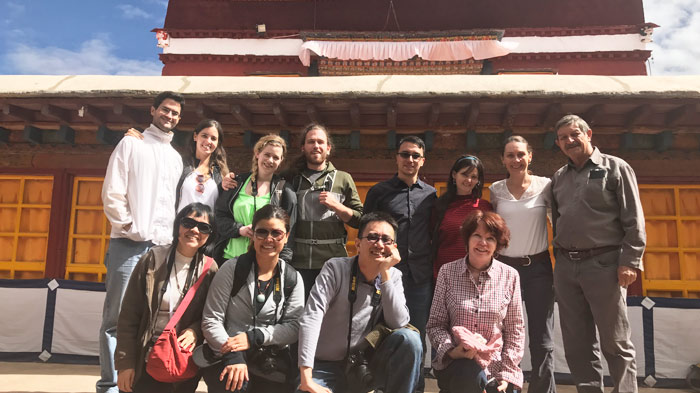 Our cleients enjoy their Pelkor Chode Monastery tour very much during in Shigatse.
Our cleients enjoy their Pelkor Chode Monastery tour very much during in Shigatse.
Pelkor Chode Monastery is a typical combined building with stupa and temple, and quite different from other Tibetan monasteries in more aspects. It enjoys a high status in Tibet Buddhism history because it houses three sects -- Sakyapa, Kadampa and Gelugpa together.
Hence, the design and layout of Pelkor Monastery is a synthesis of the three sects to combine different structural Zhacangs, enshrined deities and more integrated Tibetan Buddhist culture. Whether you come for Tibetan architecture art or the profound Tibetan religious culture, Pelkor Chode Monastery with different Buddhist sculptures, monastery architectures, religion murals can give you something unexpected.
Shalu Monastery to Nartang Monastery - Shortest & Most Relaxing Tibet Trek
Shalu Monastery is situated in the Shalu village of Gyantso District, 23.4 kilometers away from the southeast of Shigatse city. It was built in 1087 by Jigzun Xerab Qoinnyai. Shalu Monastery is famous for its combination of Han and Tibet architectural styles. There are a large number of murals, Buddha, scriptures, thangka, and ritual items. Moreover, the sutra board, “Holy Water Urn”, stone basin and stone tablet are four famous religious treasures in Shalu Monastery. Nowadays, it has become an important site for both tourists and religious worshipers.
Located within the territory of Shigatse City, Nartang Monastery is about 17 kilometers away from Shigatse city. Nartang Monastery was originally built in the year of 1033 by the Kadampa monk Luojiazha. Although it is not as grand as Tashilhunpo Monastery, its history can date back to more than 400 years earlier than the latter one. Narthang was famous for its scriptural teaching and monastic discipline. In the printing business, Nartang Monastery is larger than that of Potala Palace and Dege in terms of both scales and the contributions, known as “Tibetan Library”. Besides, a large number of cultural relics were preserved in the monastery, for instance, Thangka of Yuan Dynasty, Ming Dynasty and Qing Dynasty.
 Our clients are making a short trek from Shalu to Nartang Monastery.
Our clients are making a short trek from Shalu to Nartang Monastery.
By the way, if time allows, you can also try to take a short trek from Shalu to Nartang Monastery. It usually takes you 2 - 3 days to complete this 45-kilometer-long scenic hike. The journey starts from the historically famous Shalu Monastery and ends in Nartang Monastery. On the way, various villages and monasteries like Ngor monastery can be witnessed. It also covers Upper Lungsang. You can also feel the caravans laden with scriptures and treasures that once passed this way while you trek through the route. Here we have already worked out the ultimate Shalu Nartang trekking guide for your reference.
Tashilhunpo Monastery - Traditional Seat of Panchen Lama & Future Buddha & Monk Chant
Tashilhunpo Monastery is located at the foot of Drolmari (Tara's Mountain), western side of Shigatse. Tashilhunpo Monastery and three major monasteries (Sera, Ganden, and Drepung) in Lhasa are regarded as Four Greatest Monasteries of Tibetan Gelugpa Sects. Founded by the First Dalai Lama in 1447, it is an important monastery in Tibetan history and culture.
Tashilhunpo is also the traditional seat of the Panchen Lama, the second most important Lama in Tibetan Buddhism. Occupying an area of nearly 150,000 square meters, the monastery is the largest monastery in Shigatse, which has about 57 halls and 3600 rooms. In its prime, the monastery had over 4,700 monks. Now there are close to 800. In sacred Tashilhunpo Monastery, it stores many treasures, including the giant priceless Future Buddha Statue, precious Buddha Stupas, and more manuscript Buddhist texts and numerous murals. Besides, the specialized form of chanting is another attraction here.
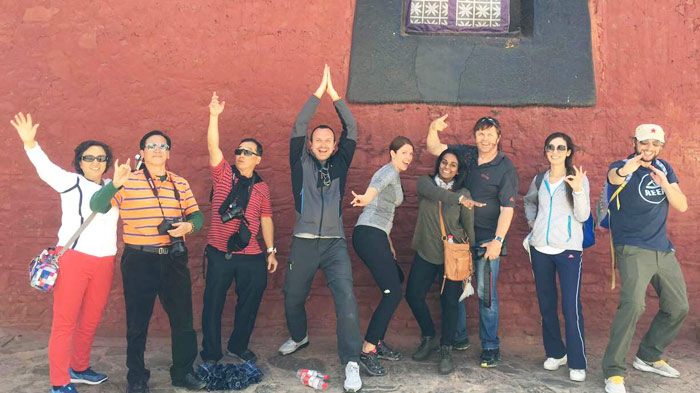 To explore the Tashilhunpo Monastery in Shigatse. What an exciting experience!
To explore the Tashilhunpo Monastery in Shigatse. What an exciting experience!
The future Buddha Statue is the largest gold gilded bronze statue in the world, enshrined in the 5-story Maitreya Hall, situated in the west side of the monastery. First built in 1914 by the ninth Panchen Lama, it remains its great majesty and solemnity. This hall is constructed by stones and decorated with copper bells under the roofs. And the future Buddha is the main feature here. Sitting on the 3.8 meters height lotus seat, the statue is 26.2 meters high and 11.5 meters wide across the shoulder, quite eye-catching when you enter the hall.
As a treasure of Buddha statues, it was 110 craftsmen who spent 4 years building this great achievement. Taking a close look, you can find there are various shapes of pearls and diamonds dotted with its brows. What’s more, there are also various chanting halls where the faithful monks would repeat the scriptures over and over again in the morning. By exploring Tashilhunpo Monastery, you will have a fantastic sightseeing as well as a spiritual journey.
Sakya Monastery - Reputed as the “Second Dunhuang”
Sakya Monastery is the principal monastery of the Sakya Sect of Tibetan Buddhism. It is located in the city of Sakya, in the Tibetan region of Tsang, about one hundred miles north of the border between Tibet and Nepal. In Tibetan, the word Sagya means the “Grey Soil” in the Tibetan language, referring to the weathered gray earth on the Bonbori Hill where the monastery is located. This name later referred to the place then to the Sagya Sect of Tibetan Buddhism.
 Sakya Monastery is one of the important monasteries of Shigatse.
Sakya Monastery is one of the important monasteries of Shigatse.
Built in 1073 by Khonchong Gyalpo, the monastery is 148 kilometers away from Shigatse. As the first temple of Sakya Sect with over 900 years of history, it kept many historical relics, including numerous stupas, Buddhist scriptures, magnificent surviving artwork, etc. Here, you can not only discover the history of the religion but also experience a combination of cultures. What's more, compared with other Tibetan monasteries, the tranquility with the clean atmosphere is more suitable for meditation and worth visiting.
Rongbuk Monastery - the Highest Monastery in the World
Rongbuk Monastery is located in the Shigatse Region, southwest of the mysterious Tibet Autonomous Region, and to the north of the majestic Mt. Everest, the highest peak in the world. Rongbuk is the highest monastery in the world. It was founded in 1902 by a Nyingma sects’ Lama and is part of the Nyingma sect of Tibetan Buddhism.
The area where Rongbuk Monastery was built had been used by monks and hermits for meditation for over 400 years. Hermitage meditation caves dot the cliffs around the monastery, and many stones carved with prayers and sacred symbols line the paths to them. Today, numerous meditation caves can be found along the mountainsides in the Rongbuk Valley.
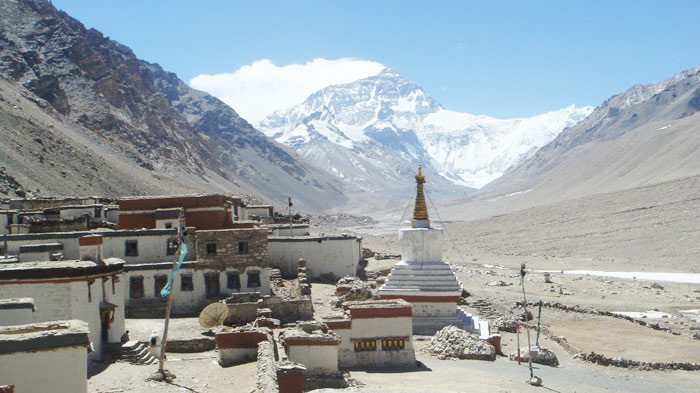 Rongbuk Monastery is the world's highest monastery, and travelers can have a good view of Mt. Everest from here.
Rongbuk Monastery is the world's highest monastery, and travelers can have a good view of Mt. Everest from here.
Each year in 15th April of the Tibetan Calendar, Rongbuk Monastery will host a Buddhist dancing ceremony known as the Saka Dawa Festival which lasts for three days. This is held to celebrate the birth of Sakyamuni. During the ceremony, the noisy spectacle attracts hundreds of visitors each year. Another festival celebrated at this monastery is the Ghost Festival. It is held on the 29th day of the 12th month on the Tibetan Calendar. The festival is used to placate ghosts and monks wearing masks perform in the grand festival.
Yungdrung Ling Monastery - the Second-most Influential Bon Monastic Institution in Tibet
Yungdrung Ling Monastery is regarded as the ancestor monastery of Bon religion in Tibet. (Before the introduction of Buddhism, Bon was firmly established and flourishing in Tibet. It's the primitive and authentic religion of ancient Tibetans.) It is also the second-most influential Bon Monastic Institution in Tibet (the first is Nangzhig Monastery).
Yungdrung Ling Monastery is located in Namling County about 78 kilometers away from Shigatse city. It was established in 1834 by Nangton Lawa Gyeltsen. It was listed as a state-protected temple in 1959. There were over 500 monks. Now, there are approximately 65. Dukang Hall, with 64 pillars, is the main building of the temple. And also is the main place for religious activities. In addition, it also stores Tibetan scriptures like the Ganjur and Tengyur. Nowadays, many devout Bon followers travel a long way to Yungdrung Ling Monastery to worship.
Phuntsoling Monastery - the Only One Jonangpa Monastery in Tibet
As the only one Jonangpa monastery in Tibet, Phuntsoling Monastery was founded in 1615 and was once the central monastery of the Jonangpa. It is now the home to 50 monks in Shigatse. Dolopa Sherab Gyaltsen was the greatest scholar of this monastery who was one of the first proponents of the Shentong (a hard-to-grasp notion). Roughly, this is based on the idea that the Buddha-mind (which transcends all forms) is not ultimately empty, even though all forms are empty illusions. In the 17th century, the monastery was forced to convert into a Gelugpa institution by the 5th Dalai Lama.
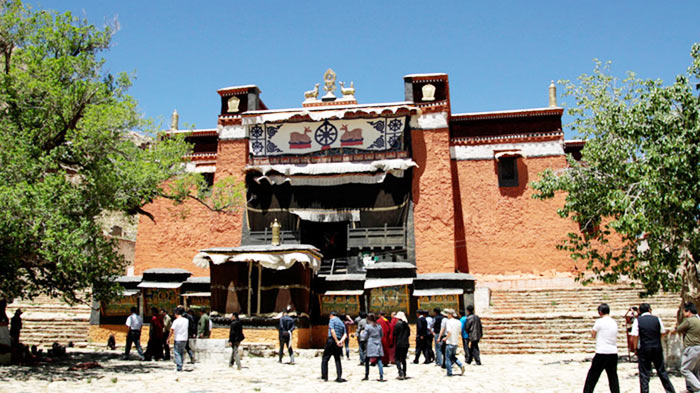 Phuntsoling Monastery is the only Jonangpa monastery in Shigatse, Tibet.
Phuntsoling Monastery is the only Jonangpa monastery in Shigatse, Tibet.
A festival is held at Phuntsoling Monastery every year around the middle of the 4th month of the Tibetan Calendar, lamas and believers from all over the world will gather together in this monastery to pray and celebrate. However, this festival is not open to international tourists.
Paba Monastery - Nepali-style Monastery Built by Songtsen Gampo for Princess Bhrikuti
Paba Monastery is located in the east of Gyirong township, with the altitude of 2,850 meters. It was built by King Songtsan Gampo for Princess Bhrkuti from Nepal. Therefore, the architectural style is mainly in accordance with the format of Nepali temples.
Paba Monastery has a distinctive architectural style, whose overall shape is a storied stone pagoda with stairs spiraling up to the top in the middle of the tower. Paba belongs to pavilion-style wood structure building. It has four floors and the first floor is Buddhist Hall which consists of porch and main hall. The most famous thing in Paba Monastery is murals. These murals are well preserved and have historical and artistic value.
Dos and Dont's While Visiting Monastery in Shigatse
Recently, for many travelers to Shigatse, a visit to a Tibetan Buddhist Monastery is at the top of their to-do lists. Here is a list of do’s and don’ts to help visitors to explore monasteries in Shigatse.
1. According to Tibetan Buddhism, no matter whether you are a pilgrim or a casual visitor, all people should walk clockwise when visiting Tibetan monasteries. And if you are using a prayer wheel, don't turn it counter clockwise. Don’t take prayer flags or Mani (prayer) stones. On the contrary, all people should walk counter-clockwise when exploring Yungdrung Ling Monastery and other Bon monasteries.
2. At all hours, always ask permission to take photos, especially when using a flash. The larger monasteries charge photography fees, though some monks will allow you to take a quick picture for free.
3. Usually, travelers need to bring a hat and sunglasses because of the strong UV radiation in Tibet. But remember to take them off them when visiting monasteries in Shigatse. And don't wear shorts or short skirts in a monastery. More importantly, be aware that women are generally not allowed to get into monasteries. Therefore, always ask before entering.
4. Don't point at Buddha Statues with one finger. It's quite rude to point at a person with one finger in Tibet, let alone the Buddha's image. Hence, in order to show individual respect to Buddha and local monasteries, people should never point at Buddhist idols or shrines with one finger.
Conclusion
Touring Shigatse’s monasteries is one of the most effective ways to learn Tibetan Buddhism and its profound influence on Tibetan culture and customs. More importantly, however, please make sure to respect the local customs and religious beliefs. With more suggestions, please contact our travel consultant before you prepare to have a Shigatse tour.

The Lhasa-born prodigy used to study business overseas, and got his Bachelor of Business in Nepal and India before moving back to his homeland. With pure passion for life and unlimited love for Tibet, Kunga started his guide career as early as 1997.
Responsible, considerate, and humorous, he devoted his entire life to guiding and serving international tourists traveling in Tibet. As a legendary Tibetan travel guru with 20-year pro guide experience. Currently, he is working in Tibet Vista as the Tour Operating Director. Whenever our clients run into trouble, he is your first call and will offer prompt support.
Related Articles & Posts
Most Popular Tibet Tour Packages
-

Lhasa - Gyantse - Shigatse - Everest Base Camp - Shigatse - Lhasa
USD939
View Details -

Lhasa - Gyantse - Shigatse - E.B.C - Saga - Kailash Trek - Darchen - Lake Manasarovar - Saga - Gyirong - Tingri - Lhasa
USD2059
View Details -

10 Days Lhasa to Everest Base Camp and Namtso Lake Small Group Tour
Lhasa - Gyantse - Shigatse - EBC - Shigatse - Lhasa - Namtso Lake - Damxung - Lhasa
USD1289
View Details -

8 Days Driving Across Himalaya Overland Adventure from Kathmandu to Lhasa
Kathmandu - Gyirong - Everest Base Camp - Tingri - Shigatse - Gyantse - Lhasa
USD1069
View Details -

4 Days Lhasa Impression Small Group Tour: Explore the Heart of Tibet and Mingle with the Locals
Lhasa
USD509
View Details -

Lhasa - Gyantse - Shigatse - Everest Base Camp - Gyirong - Kathmandu
USD979
View Details -

Lhasa - Gyantse - Shigatse- Lhasa
USD799
View Details -

13 Day Lhasa, Mt. Everest, Mt. Kailash, Lake Manasarovar and Kathmandu Adventure Tour
Lhasa - Gyantse - Shigatse - EBC - Saga - Darchen - Kailash Trek - Darchen - Saga - Gyirong - Kathmandu
USD2059
View Details


.jpg)



